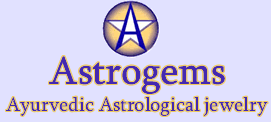 |
 |
| |
|
Frequently Asked Questions Are
synthetic gemstones equal to natural gemstones? Synthetic gemstones, on the other hand, is a term applied to materials that have been melted, but that do not have a symetrical atomic lattice similar or identical to a natural gemstone. Synthetic sapphires and rubies outnumber lab-grown sapphires or rubies by a margin of well over ten thousand to one . But this does not stop the retailers from commonly promoting their synthetics incorrectly as lab grown. The laboratory growth process can take up to a year for a ruby. There is no evidence to suggest that when a ruby grew near the magma-flow of the same size, it didn't take the same period of time. The very, very important factor to consider is that the laboratory grown rubies are not enhanced or heated to change their color or melt or dissolve their inclusions. If you have had the time to study the trade magazines on the gem industry, you will realize that there is an extremely high incidence of rubies that are heat-treated, and you cannot always tell, or see evidence of this process. Very, very often if the gemologist can not find evidence of heat treatment, the gem is certified as natural. It's simply not provable. This is why if you send the same batch of rubies to several different laboratories, they will come back with different conclusions as to whether they've been heated or not. A Gemological Institute of America's report appearing in their official magazine corroborates this observation. My personal experience demonstrates the comparison between natural and laboratory-grown gems. I recently purchased, on behalf of a client, a four-and-a-half carat emerald for ten-and a half thousand dollars. We bought it at the cutters, in, of all places, India. I submitted it to a GIA for a laboratory report. To this I added my own appraisal. They matched; it was a natural stone, oiled, of particularly good value for its depth of color and clarity. Significantly, it didn't have the depth of green of the laboratory-grown emeralds that I have available for forty to fifty-five dollars a carat. Due to many such experiences, I strongly stand by the laboratory grown emeralds. One of the main reasons is that I've had many people wear natural emeralds, and then transfer to the laboratory-grown emerald crystals cut, faceted material, and those who compared both stones, definitely preferred the results they got from wearing the laboratory grown. I am openly ridiculed by other gem dealers and astrologers who have not had the same extensive observation I have and thus request the reader to analyze all the scientific data in the scientifically measurable qualities chart in the booklet between the crystals of different origin. Return to Frequently Asked Questions |

